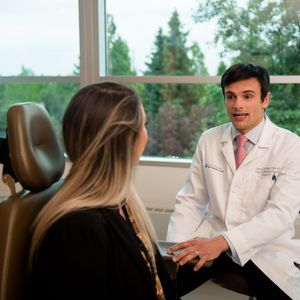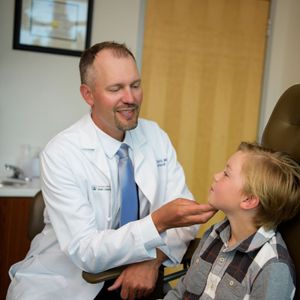Provider FAQs
Alaska Center For Oral + Facial Surgery
Alaska's Only AAAHC Accredited Oral & Maxillofacial Surgery Practice

Who will monitor my patient after their surgery with AOFS?
Your patient’s AOFS oral surgeon will follow them for all post-operative evaluations and concerns.
Will you refer my patient to another dentist after you have provided surgical care?
We will refer your patient back to your dental clinic after we have completed their evaluation and treatment.
Will your surgeons “take over” patient treatment planning once a referral has been made?
At AOFS, our surgeons believe in collaborative efforts with referring dentists because they result in the best patient outcomes. We will make every effort to openly discuss critical aspects of mutual patient care.
Will AOFS value my patient’s time?
At AOFS, we promise to both schedule your patient expediently and see them and provide care punctually at the time their appointment has been secured.
Are your surgeons qualified to take care of patients with complex care needs?
At AOFS, we have the best oral surgeons around to perform complex procedures like head and neck pathology, to more common ones such as tooth removal and dental implants. Drs. Nordstrom and Ueeck have degrees in both medicine and dentistry as well as advanced training anesthesia and pediatric surgical care.
Will my patient be treated like a person or a customer?
At AOFS, our surgeons and staff follow the golden rule: “treat others as you would like to be treated.” Simply put, if a patient is not happy, we are not happy. Providing empathetic patient-centered care is a guiding philosophy at AOFS, so not only will you get superb oral surgery outcomes, you’ll be greeted by doctors who truly care.
I am a physician, not a dentist. Can I refer my patient to AOFS?
Our surgeons are physicians with expertise in evaluation and treatment of both oral and other head and neck conditions that fall into a wide spectrum of medically designated billing codes.
I am hesitant to refer a patient for whom I have started a procedure but have run into complications and don’t feel comfortable proceeding. Does AOFS willingly accept patients in this setting?
Our staff and surgeons will never apply a “guilt trip” for a dentist who sends a patient to our office for urgent procedure assistance. We are always available to make sure your patient is taken care of quickly and effectively.
My patient requires treatment and post-operative care in a hospital setting. Are your surgeons credentialed to operate in local hospitals?
All three of our surgeons hold appointments and admitting privileges at both Providence Alaska Medical Center and Alaska Regional Hospital.
My patient needs a lot of work, but they are low on funds. Are you able to help?
Our surgeons and billing specialists will work with your patient to introduce all appropriate surgical options with flexibility in timing to ease financial concerns.




